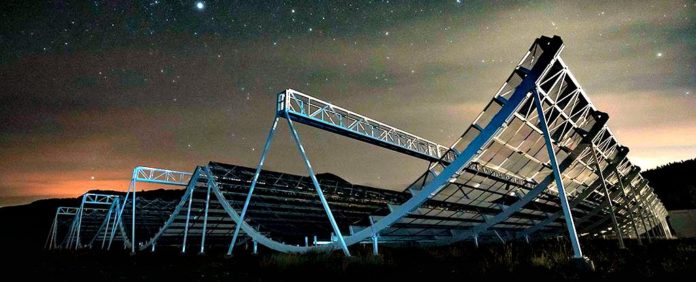Stargazers have recognized yet another strange and intense fast radio burst hitting Earth from an unknown source in space. The radio burst is fantastically low, in the 580 megahertz frequency range – about 200 MHz lower than some other fast radio burst we’ve grabbed on previously.
Fast radio bursts (FRBs) are the most explosive and mysterious events in the Universe. They can potentially generate energy as like as 500 million suns within milliseconds.
Astronomers have detected repeated signals sending out multiple FRBs from the same location. This empowered them to pinpoint where in the Universe it’s coming from.
According to a report in The Astronomer’s Telegram, on the morning of 25 July 2018, an array of radio telescopes in British Columbia, Canada, detected a very strange FRB. This fast radio burst has been named FRB 180725A after the year, month, and the day it was detected.
The most intriguing part is that the intense signal was transmitted in radio frequencies as low as 580 megahertz – making it the primary identification of a FRB under 700 MHz. The event had an approximate width of 2 ms and was found at dispersion measure 716.6 pc/cm^3 with a signal-to-noise ratio S/N ~20.6 in one beam and 19.4 in a neighboring beam.
This new detection shows that the signals were coming from very far away, possibly billions of light-years. This suggests whatever is causing them has to be extremely energetic.
Astronomers hope that the signals could help them unveil clues as to the origin of the Universe and the mysterious Epoch of Reionisation, the time during which the interstellar medium, primarily hydrogen, became ionized in the very early universe.
Additional FRBs have been found since FRB 180725A and some have flux at frequencies as low as 400 MHz. These events have occurred during both the day and night and their arrival times are not correlated with known on-site activities or other known sources of terrestrial RFI.
